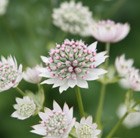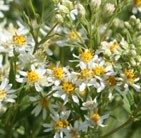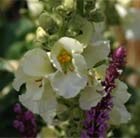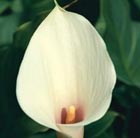Price reductions at Crocus
by Sarah - December 24th, 2009.Filed under: Crocus, Price Reductions.
Crocus has reduced the price on loads of products today

jonquilla daffodil was £4.49 now £2.49
Position: full sun or partial shadeSoil: well-drained soil Rate of growth: fast-growing Flowering period: March – April Flower colour: white petals with a green eyeOther features: excellent cut-flowersHardiness: fully hardyBulb Size: 14/16This bulb is making its world premier with Crocus this year, as it has just been developed by our specialist grower in Holland. Named after the growers daughter, it has white petals and an astonishing green eye. We think it is the first in this group of daffodils to have this colouring, so it is very special. You usually get one to three flowers one each sturdy stem.Garden care: Wearing gloves plant bulbs 10-15cm deep and 10cm apart in autumn. After flowering feed with a balanced fertiliser, dead-head the flowers, but do not be tempted to cut back or tidy the foliage after flowering as this will interfere with the bulbs ability to store energy for the following year’s flowers.

masterwort was £5.99 now £3.99
Position: full sun or partial shadeSoil: fertile, moist, preferably humus-rich soilRate of growth: average to fast-growingFlowering period: June to AugustFlowers: whiteOther features: the flowers are excellent for cutting and dryingHardiness: fully hardyWonderful, white, pincushion flowers with a collar of extra long, green tipped petals on wiry, branched stems above deeply divided, dark green leaves. This astrantia is thought to have originated in Margery Fish’s garden at East Lambrook in Somerset, and christened there and then. It is one of the best pale varieties, with large flowerheads and more deeply cut foliage. Like all astrantia, it can cope with a range of soils from alkaline to heavy, damp soil in dappled shade.Astrantias have been cultivated in Britain since the 16th century and have numerous common names, such as melancholy gentleman, Hattie’s pincushion and the more well known masterwort.Garden care: Incorporate plenty of organic matter when planting and water well in dry weather especially newly established plants. Lift and divide large clumps in early spring and apply a generous 5-7 cm mulch of well-rotted manure or garden compost around the plant. Divided specimens may take some time to establish since they don’t like having their roots disturbed.

michalmas daisy was £5.99 now £3.99
Position: full sun or partial shadeSoil: well-cultivated, fertile, moist soilRate of growth: averageFlowering period: August to OctoberFlower colour: redOther features: lance-shaped, mid-green leavesHardiness: fully hardyA brilliant plant for adding much needed late colour to the garden as the large, light red flowerheads appear on top of stiff upright sprays from late August to October. It will flourish in full sun or light dappled shade and will look good in herbaceous borders or prairie style planting.Garden care: Stake with bamboo canes or brushwood in early spring. Water regularly during dry spells and deadhead regularly to prolong flowering. After flowering cut the flowered stems to the ground and apply a generous mulch of well-rotted garden compost or horse manure around the base of the plant.Asters are one of the easiest plants to take cuttings from. All you need to do is pull away sideshoots that have already rooted. These can then be potted up individually or planted directly in to the garden.

flat-topped aster was £5.99 now £3.99
Position: full sun or light shadeSoil: most well drained soilsRate of growth: averageFlowering period: August to OctoberHardiness: fully hardyPretty white flowers, tinged purple, with yellow centres appear from the end of summer to autumn. The flowers are produced in flattish clusters, hence the common name ‘flat-topped aster’. They are one of the earliest asters into flower and each individual flower has petals which tend to curve downwards. A great plant that produces clumps of mildew resistant foliage and easy-to-pick flowers. Butterflies love them too.Garden care: Stake with brushwood in early spring to support tall growth. Leave flower heads to dessicate through the winter when they will present an attractive garden silhouette. Also a rich source of food for some or our native birds. Apply a generous mulch of well-rotted garden compost or horse manure around the base of the plant in spring to encourage new growth.

hollyhock (Syn Alcea x Althaea Parkallee) was £5.99 now £3.99
Position: full sunSoil: moderately-fertile, well-drained soilRate of growth: fast-growing in height and spreadFlowering period:July-SeptemberHardiness: fully hardyThis tall hollyhock is a hybrid of Alcea rosea and Althaea officinalis. Far from presenting the slender vertical silhouette of traditional hollyhocks, Alcea Parkallee spreads generously in all directions branching from the base to form an open vase shape. Its stems are evenly studded with open cupped flowers in light apricot, which fades to a buttermilk cream. Each flower supports a central double frill and pronounced bronze stamens, from July to September. This plant provides voluminous display year after year, requiring a generous 125cm square space in the border to avoid swamping its neighbours.Garden care: Water well during dry spells. To prevent ‘rust’ from taking hold, either spray with Bordeaux Mixture (organic) or Murphy Tumbleblite (non-organic) every 10-14 days. In autumn, trim the stems back to within 50-60cm from the ground, and as you see new grwoth breaking through in spring, you can cut it back harder if desired. Cutting it back a little later in the year will help keep it more compact. Avoid excessive winter wet.

mullein was £7.99 now £4.99
Position: full sunSoil: lean, well-drained, alkaline soilRate of growth: fastFlowering period: June to AugustHardiness: fully hardyMagnificent tall stems rise out of felted grey-green basal leaves and are studded up their length with many open cupped flowers in cool ivory colour. Each flower nestles a clutch of golden stamens at its centre. Provides rapid stature and volume to the sunny border, with flowers persisting from early June to August. This giant of a plant will compliment the horizontal profiles of Achilleas, Verbena bonariensis and Foeniculum. Try also with Echinops ritro ‘Veitch’s Blue’.Garden care:Apply a 5-7cm (2-3in) mulch around the base of the plant in autumn to protect from winter extremes, taking care not to cover the crown. Stake in spring with bamboo canes or twiggy prunings before the flowers appear. Mullein moth caterpillars can be a problem, pick off the insects in early June as soon as they appear. Remove faded flower spikes.It is worth keeping in mind that these plants are mainly biennial, so although they usually self-seed freely, the plant will only live for two years.

golden groundsel was £7.99 now £4.99
Position: full sun with some midday shadeSoil: fertile, moist soilRate of growth: average to fast-growing Flowering period: July to SeptemberHardiness: fully hardyLigularia dentata are prized as much for their exotic foliage as for their flowers. In spring, large, heart-shaped, glossy, chocolate-maroon leaves with dark purple undersides appear, turning green as they mature. In summer, clusters of orange-yellow daisy-like flowers open above the foliage. This is an exciting new variety that is ideal for a moist, sunny border or bog garden, or beside water. It needs protection from strong midday sun.Garden care: Protect the young shoots from slug damage using beer traps or environmentally-friendly slug pellets. The plant must be kept moist; line the plant hole with plastic, making a couple of holes in the plastic for drainage. Water regularly during periods of drought. Lift and divide large clumps in spring or after flowering. Apply a generous 5-7cm mulch of well-rotted manure or garden compost in spring.

arum lily was £6.99 now £4.99
Position: full sun or partial shadeSoil: humus-rich, moist soilRate of growth: average Flowering period: May to July Flower colour: white flushed pale pinkOther features: all parts may cause stomach ache if eaten and the sap can irritate the skinHardiness: borderline hardyOutstanding new variety with pink flushed, white hood-shaped flowers from late spring to summer. It has glossy dark green leaves and looks stunning planted in a clump. Great grown besides water as a marginal plant and can be left outside in most frost-prone areas if it is given a deep winter mulch.Garden care: Grow in moist soil or as a marginal plant in a basket with heavy loam soil in water 30cm (12in) deep. Mulch plants well in winter.

moth mullein was £6.99 now £4.99
Position: full sunSoil: lean, well-drained, alkaline soilRate of growth: averageFlowering period: May to JulyHardiness: short lived perennialElegant slender spires have widely space white flowers with a distinct violet eye and golden stamens. Basal rosettes of gloss oak-like leaves. Flowers achieve a rosy pink flush as they fade. This plant is most successfully grown in a lean, well-drained gravel or scree, where a meagre diet avoids the need for staking. On richer soils it may need twiggy support. A good subject for the sunny border, cottage-style plantings and gravel gardens.Garden care:Apply a 5-7cm (2-3in) mulch around the base of the plant in autumn to protect from winter extremes, taking care not to cover the crown. Stake in spring with bamboo canes or twiggy prunings before the flowers appear. Mullein moth caterpillars can be a problem, pick off the insects in early June as soon as they appear. Remove faded flower spikes.It is worth keeping in mind that these plants are mainly biennial, so although they usually self-seed freely, the plant will only live for two years.
lily was £6.99 now £4.99
coneflower was £6.99 now £4.99
purple mullein was £6.99 now £4.99
pimpinella was £6.99 now £4.99
blue cowslip was £6.99 now £4.99
montbretia was £6.99 now £4.99
red hot poker was £6.99 now £4.99
white rose campion was £6.99 now £4.99
meadow rue was £6.99 now £4.99
toad lily was £6.99 now £4.99






